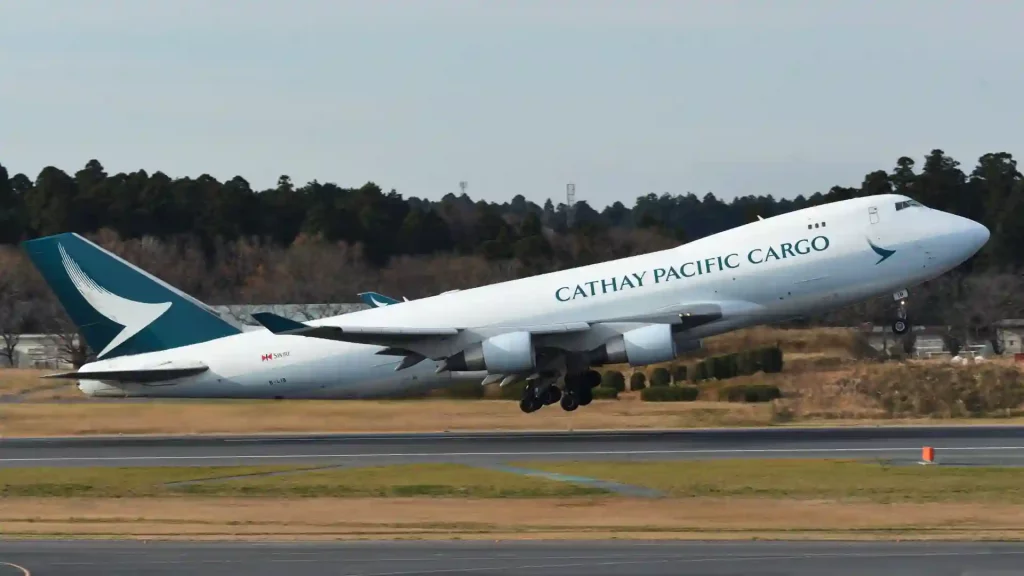Cathay Pacific with the extension of Fly Greener, to its air cargo services has taken the lead in aviation’s sustainability efforts in Asia. As part of the airline’s commitment to tackling climate change by achieving net-zero carbon emissions by 2050, Fly Greener is a carbon-offset programme powered by an integrated carbon emissions calculator.
The programme’s carbon emissions calculator determines offsetting emissions simple. Customers can then contribute to purchase carbon offsets that come from meticulously chosen carbon-offset projects. All selected projects are certified under the Gold Standard to ensure their carbon reductions are substantiated and which derives societal and progressive benefits.
The carbon-offset programme accompanies the unveiling earlier this year of Cathay Pacific’s Corporate Sustainable Aviation Fuel (SAF) Programme, which takes SAF into Hong Kong International Airport for the first time in record. It delivers corporate users the opportunity to decrease their carbon footprint from air cargo shipments and business travel by bestowing to the usage of SAF. Cathay Pacific is also the first carriers in the world to announce a target of 10 percent SAF in its total fuel usage by 2030.
General Manager Cargo Commercial at Cathay Pacific Airways, George Edmunds said that the carbon emissions calculator is additional tool the airline has made available to assist their customers accomplish their sustainability targets to make their industry and business further sustainable.
GLSHK eased to refine this system with Cathay Pacific Cargo
Consumers have now been able to evaluate their potential carbon emissions by exploring for flight connections with the emission calculator on cathaypacificcargo.com, but now registered users would be able to offset their shipments by air waybill (AWB) number using their website. The users can enter five AWB numbers at and can submit as many applications as required at a time over any monthly duration. The tool, which uses the state-of-the-art International Air Transport Association (IATA) methodology, would illustrate the volume of emissions and display the offset charge in the user’s local currency, premediated by weight, and aircraft type.
Simon Ng, CEO of Global Logistic System Hong Kong Company Limited (GLSHK), a Cathay Pacific-owned subsidiary that designed the technology. Ng said, several aspects can lead to variance in the extent of emissions produced by a booked shipment. GLSHK eased to refine this system with Cathay Pacific Cargo by utilizing a variety of data sources to assess the emissions for a shipment including the aircraft type, actual flown route, and actual flying distance to amplify the precision of the offset for the airline’s customers.
After each submission, customers would be sent a spreadsheet displaying the totals carried and claimed, including the carbon-offset computation. They would also receive a monthly statement showing all submissions from the previous month and the total to be cleared. Subsequently the customers would receive a certificate showing the offset total and the project they have supported, for their own sustainability auditing procedures.
By way of carbon credits bought by Cathay Pacific and passed on to customers at cost, the monetary contributions would go directly to fund third-party validated projects that aid offset the CO2 generated by shipments. The airline makes no revenue in the carbon-offset transactions.
The scheme at present supports four projects which bring about solar-powered hot water to households in India, solar-powered cooking stoves and small biogas plants to families in the Chinese Mainland and fuel-efficient cooking stoves to families in Bangladesh.
In the launch phase, the carbon emissions calculator would accept retrospective AWB numbers, but future iterations would find the tool built into Cathay Pacific Cargo’s digital booking and confirmation solution. Customers would be able to determine offsets directly to their bookings in a one-click procedure.
The Head of Cargo Global Partnerships at Cathay Pacific Airways, Chris Bowden said that the airline is happy to be driving industry leadership for sustainability in Asia. The airline looks forward to collaborating with their customers to promote sustainable air cargo shipments.
Bowden added that the airline is aware that carbon-offset calculations can be intricate and ought to be precise for sustainability auditing purposes. The airline considers that the ease and uncomplicatedness of Fly Greener and the carbon emissions calculator makes the rigour and complexity that goes into carbon emissions calculations straightforward and user-friendly, which is something users have been keenly looking for.
